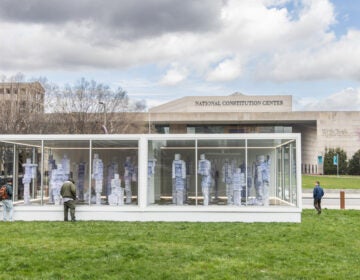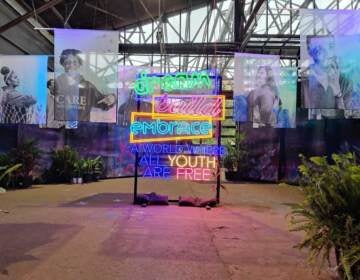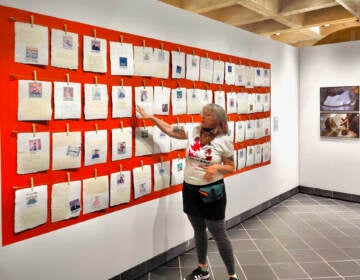Philly DA names office’s first ever artist-in-residence, James Hough
Pittsburgh-based James Hough was selected to be the first artist-in-residence in the Philadelphia’s DA’s office and believed to be the first in any DA’s office in the country.
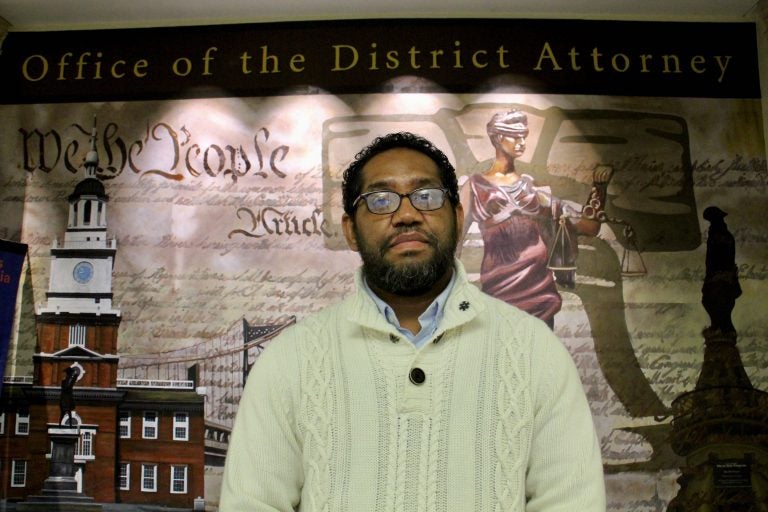
Formerly incarcerated artist James “Yaya” Hough stands in front of a mural at the Philadelphia District Attorney’s Office. (Emma Lee/WHYY)
Larry Krasner believes criminal justice reform is having a “cultural moment.”
The Philadelphia District Attorney, who came into office on a progressive platform, says criminal justice reform is an important civil rights struggle of our time, and it is finding cultural expression.
He cites Kendrick Lamar, whose 2015 song “Alright” has become an anthem for the Black Lives Matter movement. Shortly after, James Forman Jr’s book, “Locking Up Our Own: Crime and Punishment in Black America” was released to wide acclaim. Both Lamar and Forman won Pulitzer Prizes last year.
He cites Ava DuVernay’s 2019 Netflix miniseries “When They See Us,” about the Central Park Five, which won an Emmy award and 23 million viewers.
“When Dr. King gave his ‘I Have a Dream’ speech, Mahalia Jackson was up there. You saw Harry Belafonte,” said Krasner. “People in government and in the arts gathered around it, because the collective feeling was, this was incredibly important. What we’re starting to see around criminal justice reform is the same thing.”
This is why Krasner is now inviting a resident artist, who will have a front-row seat to observe the judicial process, to make artwork about it.
“It makes sense to engage the public, to engage all Philadelphians, through the arts,” said Krasner.
Pittsburgh-based James Hough was selected to be the first artist-in-residence in the Philadelphia’s DA’s office, and believed to be the first in any DA’s office in the country.
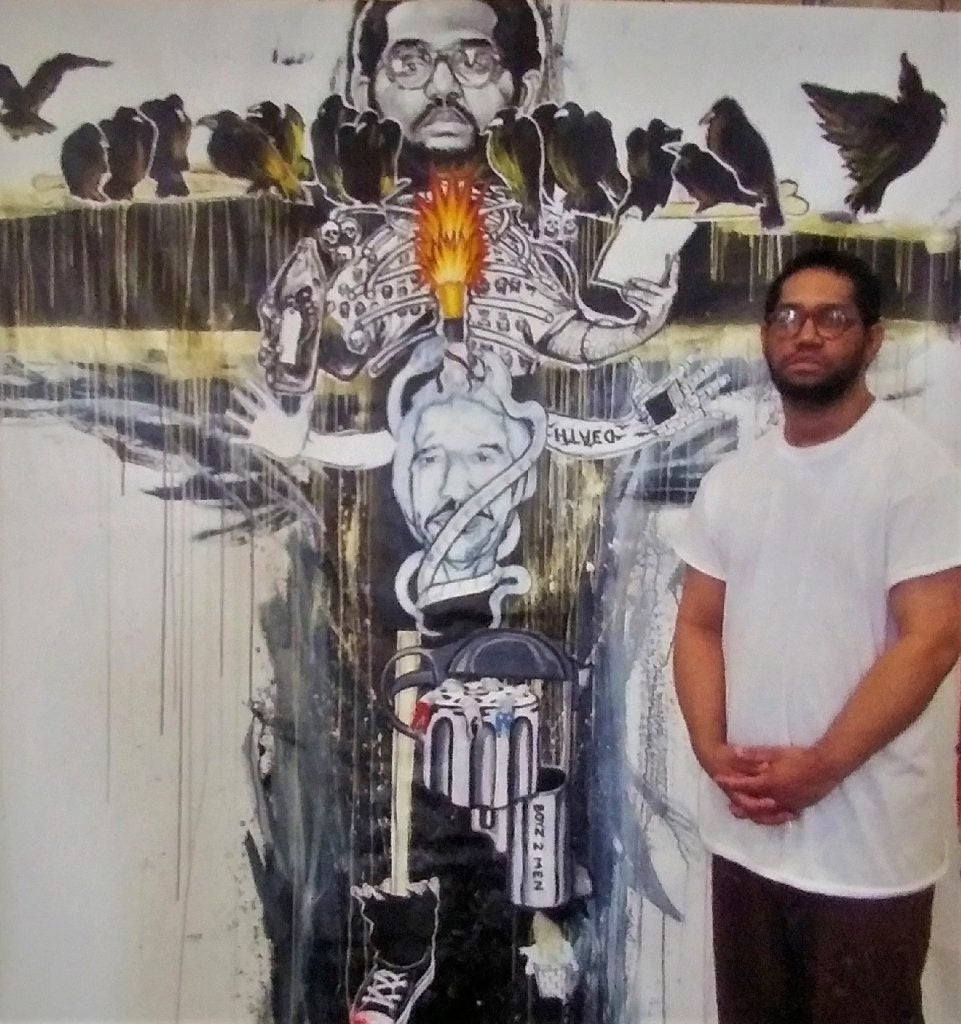
Hough will not be on the payroll of the DA’s office. The Art for Justice Fund, a philanthropic organization, will pay for his residency.
Hough has spent the last 27 years in prison, after being sentenced to life for a murder he committed as a teenager in 1992. After the U.S. Supreme Court ruled that juveniles cannot be sentenced to life in prison in 2012, he was resentenced. Hough was released from SCI Phoenix last August.
During his time inside, Hough focused on his artistic practice, becoming involved with Mural Arts Program and its Restorative Justice program for inmates.
“He is incredibly collaborative. He has humility and is incredibly smart and talented,” said Mural Arts executive director Jane Golden. “He has spent many years reflecting on his life and the turn that it took. He has learned a lot. I think James is an extraordinary role model.”

As the District Attorney’s artist-in-residence, Hough intends to spend time shadowing prosecutors and talking to crime victims whenever possible. Those interviews will inform video projects he will show publicly.
He says he wants to get a wide range of perspectives into his artwork, not just his own.
“The stereotype is that a person in prison is leading a life that is ideologically opposed to law and order. That can’t be further from the truth,” said Hough.
“I’ve always maintained that my incarceration was not only appropriate, but effective. Over the years, I’ve matured and become a little bit wiser. I have not had a problem with the incarceration. Maybe the length of it. Maybe the system overall with its structural flaws. But I didn’t have a problem with the mission of trying to create a safer society,” he said.
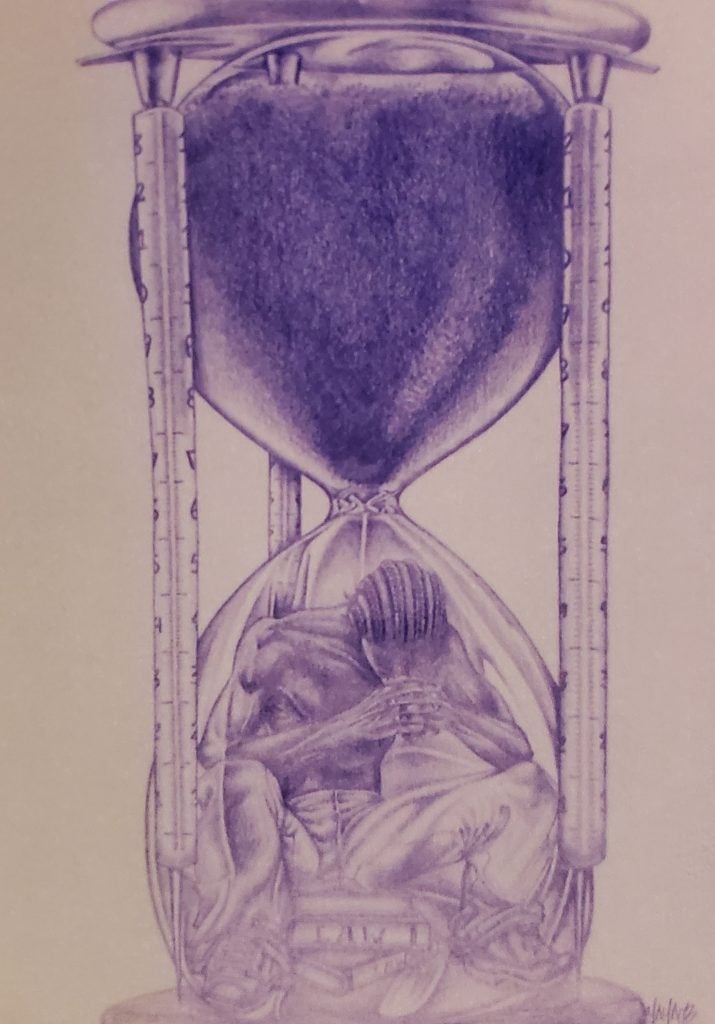
The Mural Arts Program has worked with the District Attorney’s office in the past, most recently through the Reimagining Reentry Fellowship, which created large-scale portraits of people involved in the criminal justice system in 2018. They were painted inside the windows of the lobby of the Municipal Building, where the District Attorney keeps offices.
Mural Arts has long had collaborations with city offices, including the Department of Behavioral Health and disAbility Services and the department of Health and Human Services. This is the first time it will embed an artist inside a government agency as a resident.
“How do we, as citizens, better understand what district attorneys and prosecutors do? How do we get prosecutors to better understand the issues of the world?” said Golden. “I see the artist as a bridge between the public and district attorney’s office, between the public and the courtroom.”
WHYY is your source for fact-based, in-depth journalism and information. As a nonprofit organization, we rely on financial support from readers like you. Please give today.



